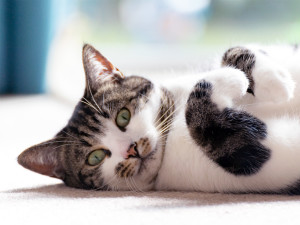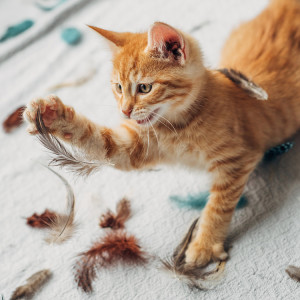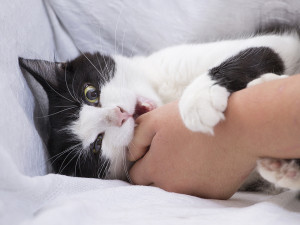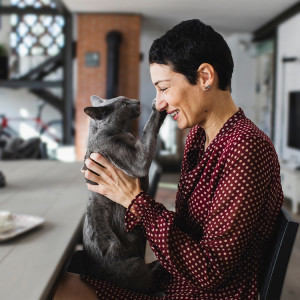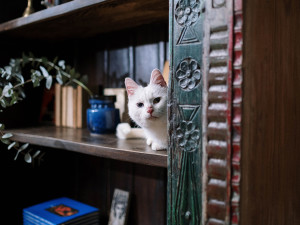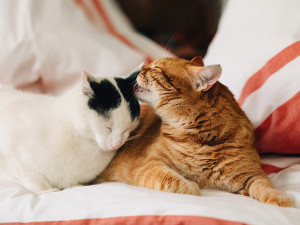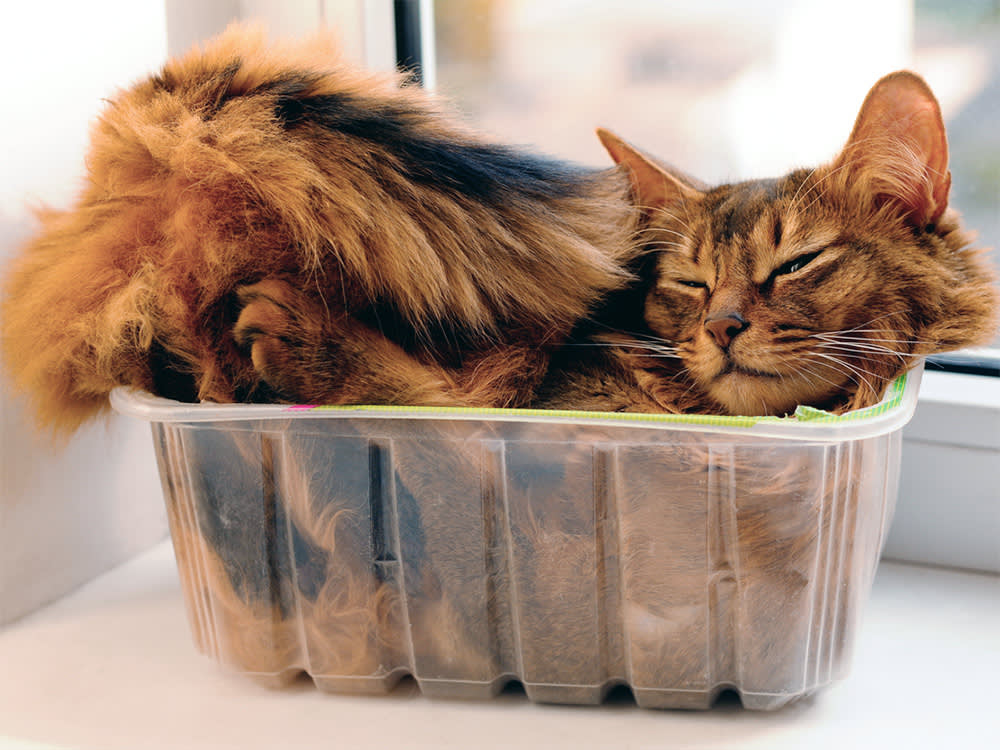
share article
Have you seen thisopens in a new tab? What about thisopens in a new tab? Or, at least, something like it? You’ve almost definitely witnessed your own cat doing thisopens in a new tab or thisopens in a new tab, right? Maybe even thisopens in a new tab? Not that your cat squeezing between two walls or curling up in the sink is quite the same thing as them willingly manoeuvring themself into a glass vase, but they’re not that different. It’s really just a matter of degrees.
Why do cats do it, though? And how? How are they so… bendy? And, again, why? What possible reason could there be for a cat to contort its body to fit into something so small and awkward? And why do they seem to pool in basins like some sort of super high viscosity liquid? They’re not liquid, of course, no matter what the various cats-are-liquid hashtags on social media might say to the contrary. And yet, given that one of the properties of liquid is that it conforms to the shape of its container, they also sort of are?
“Cats have more vertebrae than people do and between the bones is a gelatinous disk that helps them bend and flex in ways people and dogs cannot,” says Dr Gabrielle Fadl of Bond Vetopens in a new tab. “Their spines are like little springs that can be compressed and extended, which is also part of what allows them to jump so far. Cats also have a clavicle that sort of floats, which allows their shoulders to contort and compress to help them get into these tight spaces.”
Okay, but how do they know they can fit where they want in the first place? “A cat can generally fit into anything their head can fit into,” says Dr Fadl. ”So if their head can fit under or through something (like the neck of a glass vessel), the rest of their body should be able to as well, as long as there is room. They also use their whiskers to help measure space and get a full sensory picture of the situation.”
Do they ever misjudge and get stuck? “Typically, if they can wiggle themselves in then they can wiggle themselves out,” says Dr Fadl.
But why do they do it? There must be an evolutionary reason cats have developed these skills besides an inborn desire to fill a vase. “In the wild cats are both predators and prey,” says Dr Fadl. “That’s why they hide when they don’t feel well. Because they don’t want to be eaten. At the same time, they squeeze into small spaces in order to hide from their own prey. If they are crouched in a corner, then nothing can sneak up behind them, so this ability serves sort of a dual purpose.”
“It makes them feel safe,” says feline behaviour specialist Dr Marci Koski of Feline Behavior Solutionsopens in a new tab. “That said, I have four cats and none of them enjoy squeezing into vases, so I think that specific behaviour is more the exception than the rule.”
Of course, feline ‘liquidity’ doesn’t just allow them to squeeze into small spaces, it also enables them to make daring escapes, as seen hereopens in a new tab and hereopens in a new tab. It can also, on occasion, get them into trouble. “When I was really little, we had a cat who climbed into our chimney and we had to cut into the wall to get him out,” says Dr Koski. “So they do get stuck sometimes, but I suspect that might be more a case where they find themselves trying to get away from a predator.”
This extraordinary flexibility also helps cats evade predators in closer quarters. As anyone who has ever tried to grab a cat against their will can attest, cats can be very difficult to get a handle on, when they want to be. It’s this same flexibility that allows them to quickly change direction while running and always land on their feet when falling from high places.
Their wonderful flexibility and tendency to hide in small spaces is “really only a problem if your cat is squeezing into dangerous areas,” says Dr Koski, “like if they are hiding between the dryer and the wall. I’ve known cases where the cat got electrocuted in those situations, so if you know your cat likes to go into small places, it’s a good idea to block dangerous areas off. Also, if your cat has a thing for squeezing into boxes, leave some boxes out for them. That’s a safe thing to do.”
What about vases? Are vases safe? “Sure,” says Dr Fadl. “Although exactly why a cat would want to do that, I couldn’t say. I don’t know how you would be protecting yourself by squeezing into a clear vase with nowhere to go, but every cat is different and they often do things we don’t understand. I guess it is just one more reason to love them.”

Charles Manning
Charles Manning is an actor, writer, and fashion/media consultant living in New York City with his two cats, Pumpkin and Bear. Follow him on Instagram @charlesemanningopens in a new tab.
Related articles
![cat biting person's hand]() opens in a new tab
opens in a new tabWhy Did My Cat Bite Me?
Don’t live in fear of your feline overlord. A vet explains why cats bite (and what you can do to avoid their wrath)
![a tattooed person with curly red hair on a couch pets a brown and black cat]() opens in a new tab
opens in a new tabCan Your Cat Smell If You’re Stressed?
And will they do anything about it if they do?
![Short haired woman holding a gray cat that's playfully pawing at her nose]() opens in a new tab
opens in a new tabDoes Your Cat’s Fur Pattern Determine Their Personality?
It’s a little more complicated than that
![Male and female cat lying side by side.]() opens in a new tab
opens in a new tabMale vs Female Cats: What Are the Differences?
There’s more to it than you might think
- opens in a new tab
Why Is My Cat Hiding?
No, they’re not on the lam. Here are four reasons your cat might be MIA
![Two tabby cats cuddling each other with their eyes closed]()
Cats Aren’t Loners, After All
Cat behaviourist Kristiina Wilson on the importance of socialising cats
